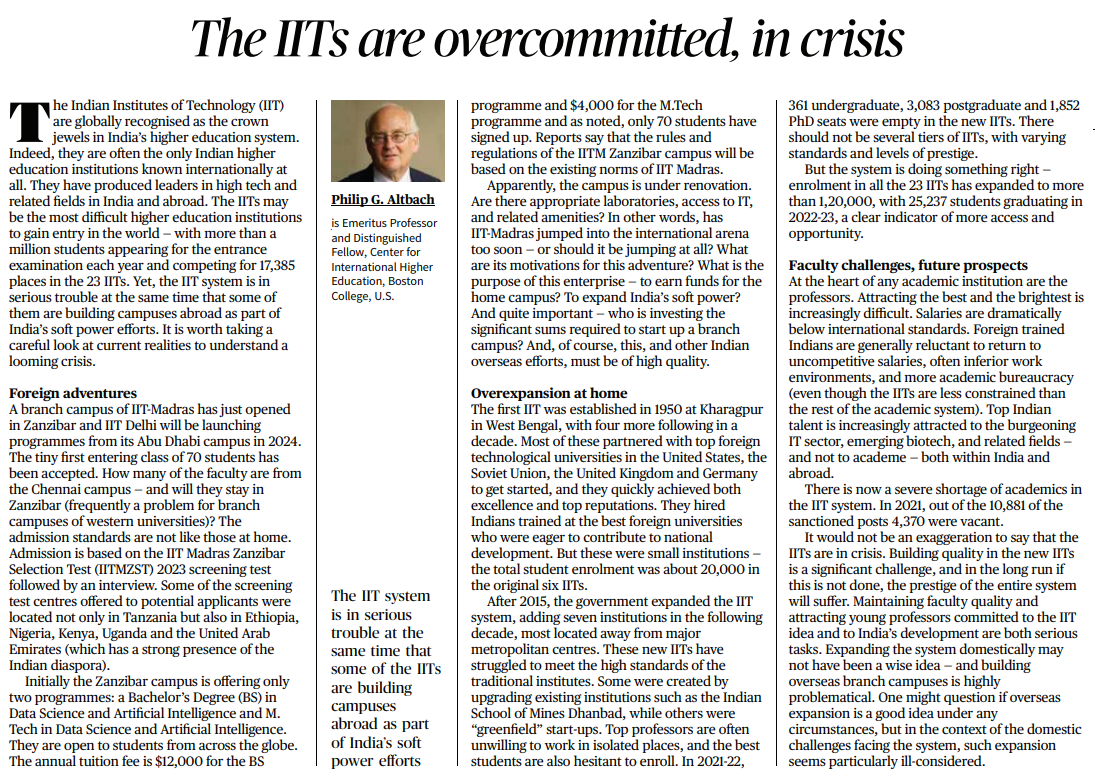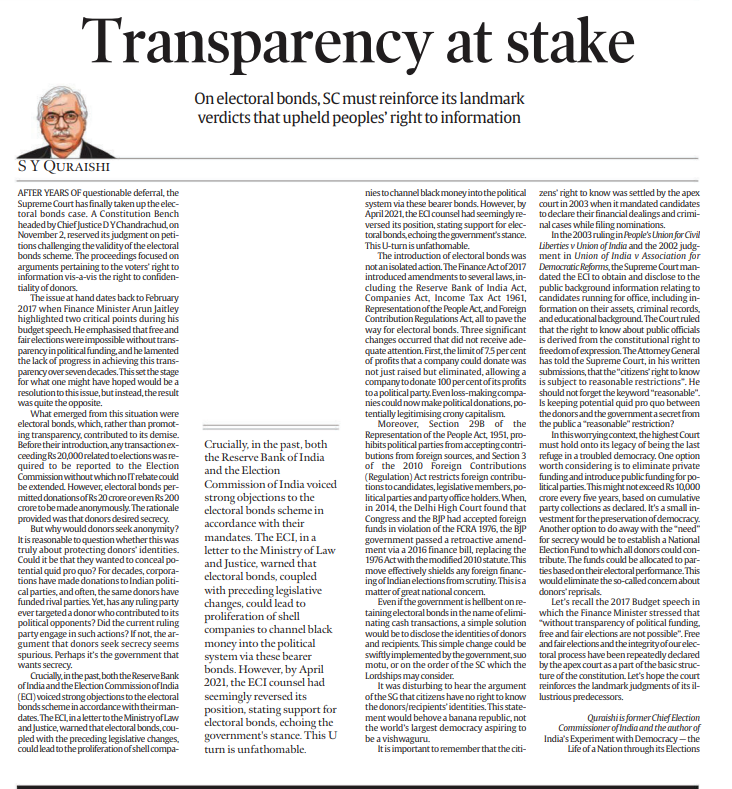Introduction
- “Roti, Kapada Aur Makaan” (Food, Cloth, and Shelter) is a 1974 film by Manoj Kumar.
- The film portrays a man’s struggle with severe deprivation due to a lack of honest living.
Deprivation and Long-term Effects
– Undernourished children often suffer from stunting, leading to poor cognition, low adult wages, lost productivity, and health issues.
– Deprivation is not solely a result of supply shortages but a lack of real income to acquire necessities.
Exaggerated Claims vs. Deprivation
– India aims for rapid economic growth, with claims of reduced poverty.
– This article challenges these claims, focusing on food and shelter deprivation.
– In 2018, 40.2% lacked money for food, rising to 48% in 2021. Shelter deprivation increased from 34.7% to 44.3% during the same period.
– The poorest quintile experiences higher food and shelter deprivation than the richest.
The Role of Income Growth and Policy
– Income growth hasn’t significantly benefited the poorest.
– Emphasis on infrastructural projects, neglect of agriculture and small enterprises, and weakened social safety nets contribute to deprivation.
The Caste Factor
- The deprivation of Other Backward Classes (OBCs) and Scheduled Castes (SCs) is not just political propaganda.
- OBCs had the highest food deprivation in 2018 (34.2%), followed by SCs (32.3%), and Unreserved (23.6%).
- The trend continued, with OBCs (31.5%) still experiencing the highest food deprivation in 2021.
- SCs displayed the highest shelter deprivation in 2018 (32.5%), followed by OBCs (31.6%), with Unreserved having the lowest (23.9%).
- While SCs’ shelter deprivation reduced, OBCs saw a slight increase, and Unreserved had a significant surge.
Age and Deprivation
– Those aged 25 to 45 years old experienced the highest share of food and shelter deprivation in 2021, likely due to low wages/salaries.
Rural-Urban Contrast
– The majority of those lacking money for food and shelter reside in rural areas (80%+), with a lower fraction in urban areas (under 20%).
– Rural deprivation has decreased, but urban deprivation has increased, likely due to the impact of COVID-19.
Government Policies and Trust
- Policies aimed at promoting industrial and agricultural growth, as well as employment, have been ineffective.
- Trust in the government has not alleviated food and shelter deprivation; high trust has exacerbated it.
- Protectionist policies and other government measures may lead to further deprivation and economic challenges.
Conclusion
– Economic growth has not translated into improved living conditions for the poorest.
– The impact of caste, age, rural-urban dynamics, and government policies on deprivation underscores the complexity of this issue.
Challenges Faced by Indian Institutes of Technology (IIT)
Introduction
The Indian Institutes of Technology (IIT) are renowned globally and often considered the crown jewels of India’s higher education system. They have produced leaders in high-tech and related fields in India and abroad. However, the IIT system is facing serious challenges while simultaneously expanding its presence overseas. This summary delves into the critical issues affecting the IITs.
Foreign Adventures
- Campus Expansion
– IIT-Madras recently opened a branch campus in Zanzibar, and IIT Delhi plans to launch programs in Abu Dhabi in 2024.
– The Zanzibar campus faces questions about faculty retention, admission standards, and access to necessary facilities.
– The motivations behind this international expansion and the funding sources remain unclear.
- Programs and Admission
– The Zanzibar campus currently offers Bachelor’s and M.Tech programs in Data Science and Artificial Intelligence.
– Admission is based on the IITMZST screening test, with test centers in several countries.
– With only 70 students enrolled, the viability and success of the international branch campuses are in question.
III. Overexpansion at Home
- Early IITs
– The first IIT was established in 1950, with four more following in a decade.
– These institutes partnered with foreign universities, achieved excellence, and built top reputations.
– The original six IITs had a limited student enrollment of about 20,000.
- B. Recent Expansion
– After 2015, the government expanded the IIT system, adding seven institutions.
– These new IITs have struggled to maintain the standards of the original institutes, leading to varying standards and prestige.
– A significant number of seats remained vacant in the new IITs in recent years.
Faculty Challenges and Future Prospects
- Faculty Shortage
- Attracting top professors to the IIT system has become increasingly difficult due to low salaries and inferior work conditions.
- Many Indian academics prefer careers in the IT sector and related fields, both in India and abroad.
- In 2021, there were 4,370 vacant faculty positions out of 10,881 sanctioned posts.
- Looming Crisis
- The IITs face a severe shortage of faculty, threatening the quality and reputation of the entire system.
- Maintaining faculty quality and attracting young, committed professors are pressing concerns.
- The decision to expand the system domestically has posed challenges, and building overseas branch campuses appears problematic in the current context.
Conclusion
The Indian Institutes of Technology (IIT) have a storied history and global recognition, but they are grappling with multiple issues, from overexpansion at home to the challenges of establishing international branch campuses.
The shortage of faculty is a critical concern that could erode the prestige of the entire IIT system. Careful consideration and strategic planning are needed to address the looming crisis and ensure the continued success of these institutions.
Introduction
The Supreme Court of India has taken up the electoral bonds case after years of deferral, with a Constitution Bench led by Chief Justice DY Chandrachud.
The case revolves around petitions challenging the validity of the electoral bonds scheme, focusing on the tension between voters’ right to information and donors’ right to confidentiality.
Background
The issue traces back to Finance Minister Arun Jaitley’s 2017 budget speech, emphasizing the need for transparency in political funding. This led to the introduction of electoral bonds, initially seen as a solution to the transparency problem but ultimately contributing to its erosion.
Questionable Transparency
- Electoral bonds allowed anonymous donations of significant amounts, even up to ₹200 crore, contrary to the previous requirement of reporting all transactions exceeding ₹20,000 to the Election Commission.
- The rationale behind this secrecy raised questions about whether it was genuinely about protecting donors’ identities or concealing potential quid pro quo arrangements.
Corporate Donations
- For decades, corporations have funded Indian political parties, sometimes even rival parties, without facing consequences.
- This raises doubts about whether donors genuinely sought secrecy or if the government had a vested interest in it.
Objections from Authorities
- Both the Reserve Bank of India and the Election Commission initially opposed the electoral bonds scheme due to concerns about money laundering and shell companies channeling black money into politics.
- However, the Election Commission’s U-turn in support of electoral bonds in 2021 was surprising and raised questions about its independence.
Amendments and Consequences
- The Finance Act of 2017 introduced amendments to various laws, eliminating the 7.5% limit on corporate donations and allowing companies to donate 100% of their profits, potentially legitimizing crony capitalism.
- Retroactive amendments were made to the Foreign Contributions Regulations Act, shielding foreign financing of Indian elections from scrutiny.
The Citizens’ Right to Know
- The citizens’ right to know about public officials was established in previous Supreme Court rulings, mandating candidates to disclose their financial dealings and criminal cases when filing nominations.
- The Attorney General argued that the citizens’ right to know is subject to “reasonable restrictions,” but the question of whether concealing potential quid pro quo is a reasonable restriction remains.
Potential Solutions
Eliminating private funding and introducing public funding for political parties or establishing a National Election Fund where donors contribute, with funds allocated based on electoral performance, are suggested as solutions to the issues surrounding electoral bonds.
Conclusion
The Supreme Court must uphold its legacy as the last refuge in a troubled democracy.
The integrity of the electoral process and free and fair elections, as declared by previous apex court judgments, is crucial.
The court’s decision in the electoral bonds case will play a vital role in determining the future of political funding transparency in India.




